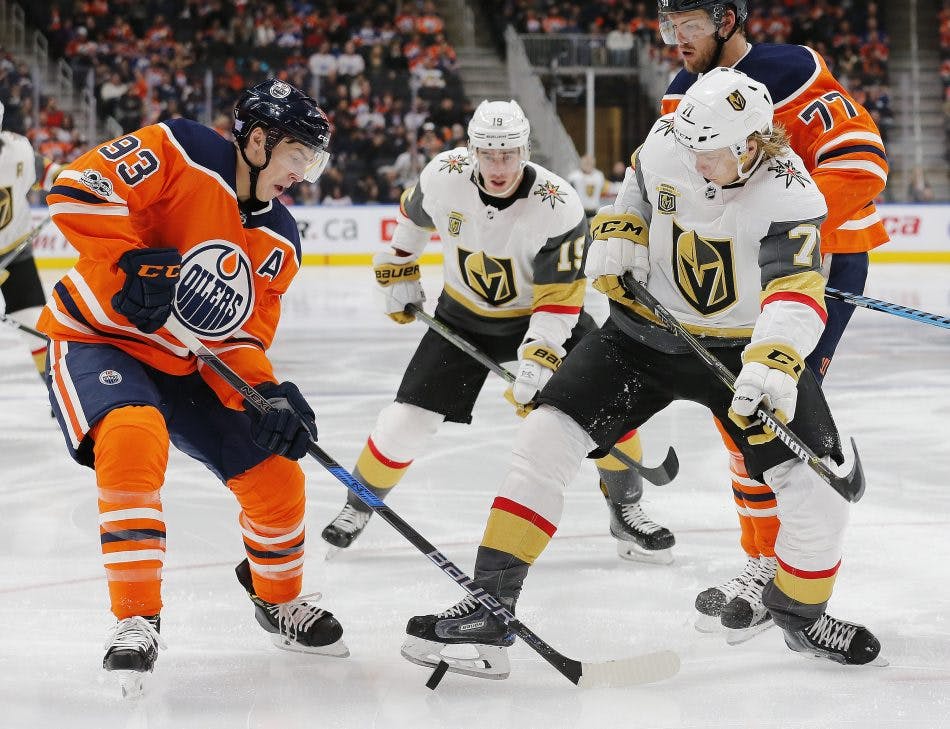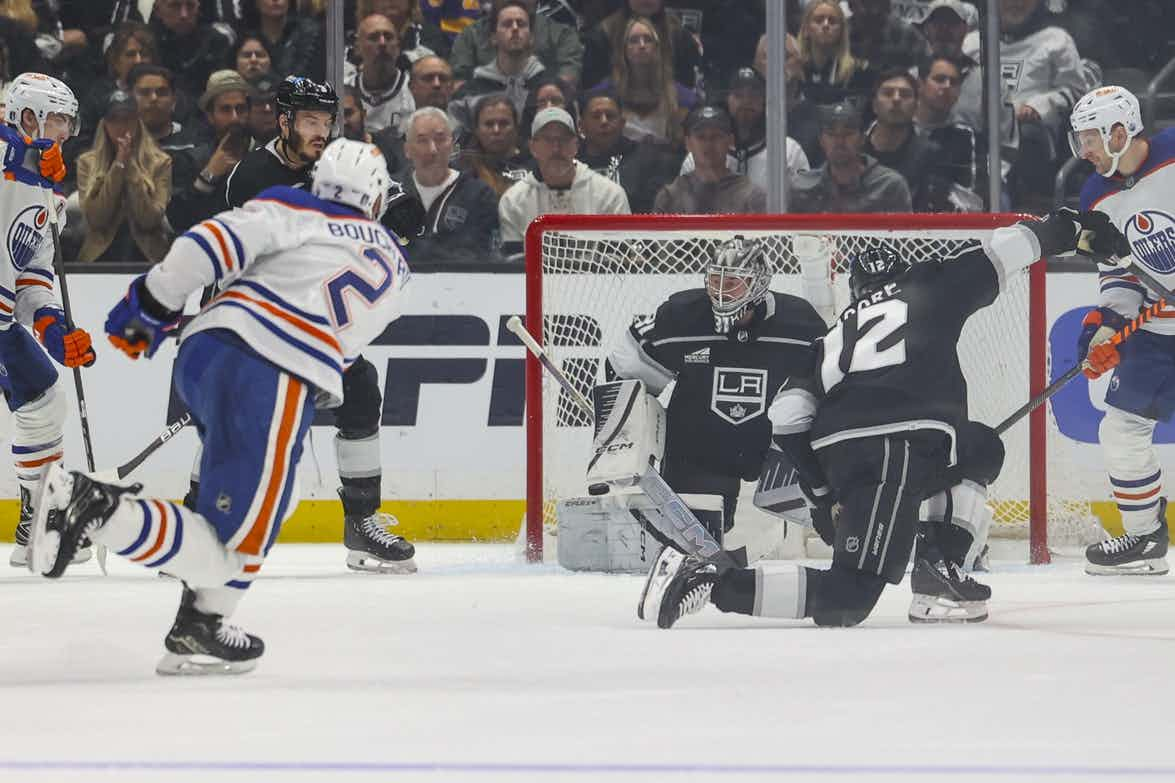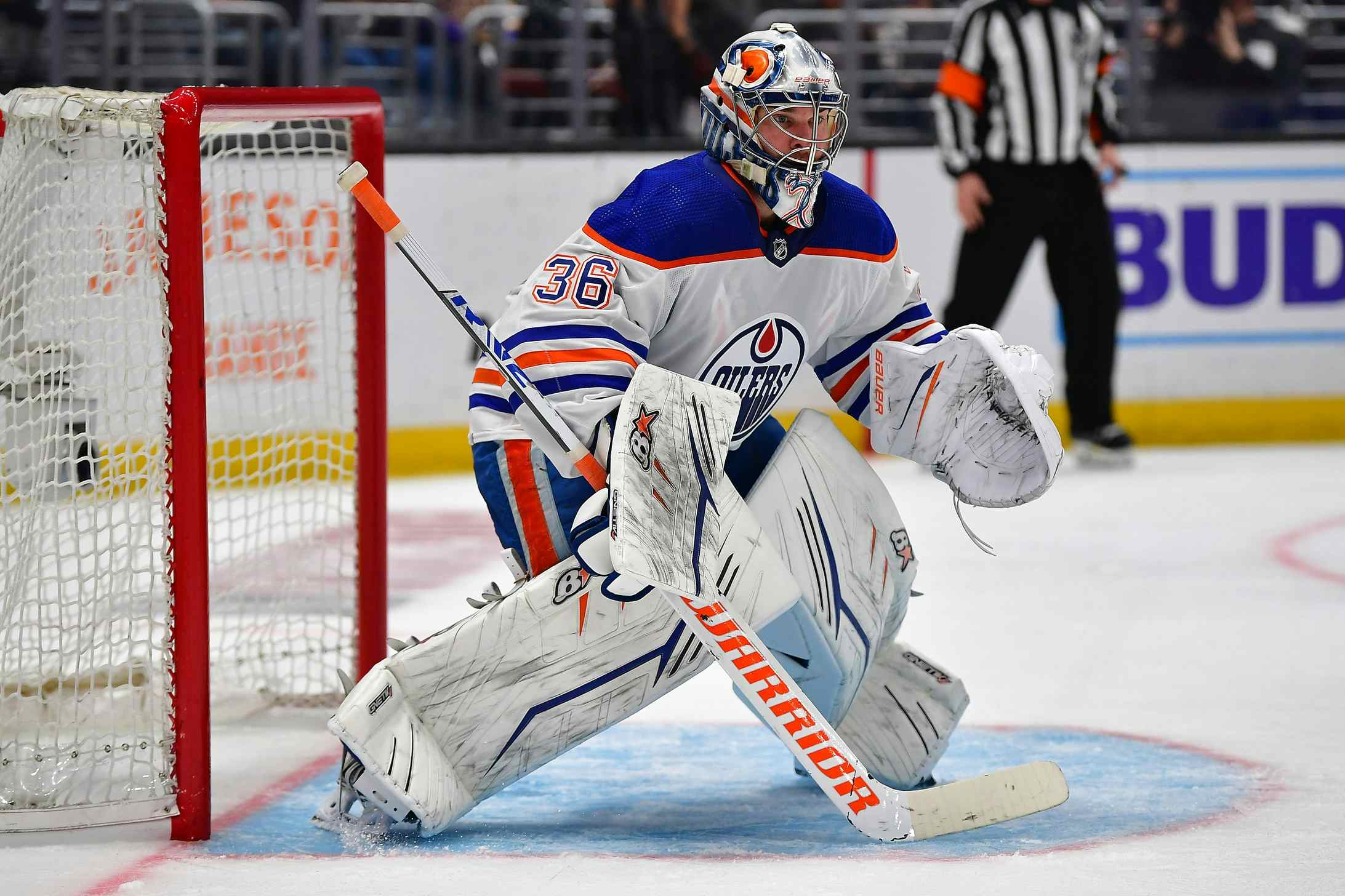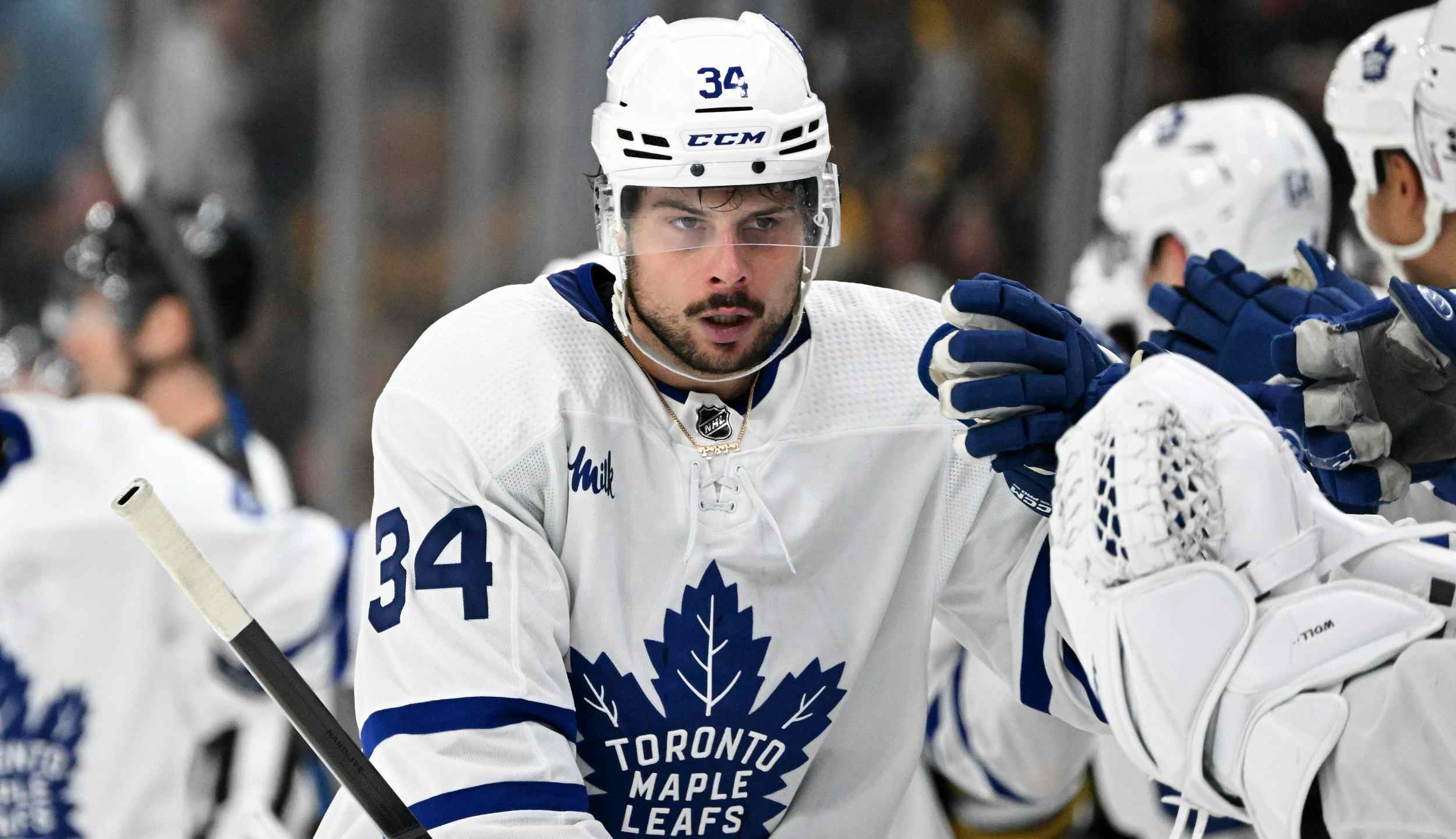Game Notes Golden Knights @ Oilers: Surprise storylines

By Jason Gregor
6 years agoThe Vegas Golden Knights are the biggest surprise in NHL history. They are first in the Pacific Division with 109 points, fifth most in the NHL, have a 40-goal scorer in William Karlsson and four players with 60 points. All of them are having career years, and it will be interesting to see how they perform next season. But regardless of what happens in the future, the 2018 Vegas Golden Knights will be remembered as the greatest expansion team in NHL history, and likely in all of North American pro sports.
1. Outside of the surprising Golden Knights, for me seeing more offence in the NHL has been a welcome change. Currently teams are averaging 2.97 goals/game, the highest we’ve seen since 2006 when it was 3.08 goals/game. Luckily, we are seeing more scoring from top-end players. Currently seven players have 90+ points, and Blake Wheeler (89), Phil Kessel (87) and Sidney Crosby and Steven Stamkos (86) could stretch that number to ten this weekend.
2. The last four seasons produced a total of three players with 90 points. Connor McDavid in 2017, Patrick Kane in 2016 and Sidney Crosby in 2014. McDavid had 100 points and won the scoring title by eleven, Kane had 106, Crosby scored 104 and each won the scoring title by 17 points. This year’s scoring race is much closer, McDavid currently has a five-point lead, but there are six players within ten points. It is the main reason the race for the Hart trophy is so hotly contested. We haven’t seen this many 90+ scorers since 2007 when the league had 14 players with 90+ points, and seven of them had 100+.
3.The last time we had a close scoring race was in 2011 when Daniel Sedin won with 104 points, while Marty St.Louis had 99 and Corey Perry scored 98. Perry won the Hart trophy with 1,043 votes to 960. We haven’t had a very close race, over a full season, since. In 2012 Evgeni Malkin won by a margin of 875 voting points, in 2014 Crosby won with 128 of the 137 first place votes, in 2015 Carey Price had 139 of the 157 first place votes, in 2016 Patrick Kane won by a margin of 595 voting points and last year McDavid picked up 147 of the 167 first place votes. This year I see a few obvious finalists, but no clear cut winner and the voting should be similar to what we saw in 2011.
4. Matt Barzal became only the eighth player in NHL history to produce 60 assists as a rookie. Larry Murphy (1981), Neal Broten (1982) had 60 helpers, Sergei Makarov had 62 assists in 1990, Bryan Trottier (1976) and Sidney Crosby (2006) had 63 and Peter Stastny (1981) and Joe Juneau (1993) had 70. Five of them became Hall of Fame players, while Broten finished with 923 career points (104th all time) and Juneau had 572. Barzal’s rookie campaign has been outstanding. Patrick Kane had 70 points as a rookie and Barzal has 82 with two games remaining.
5. The Oilers record for most assists by a rookie is 43 set by Jari Kurri in 1981. I’d guess Connor McDavid likely would have beat it had he remained healthy in 2016 when he had 32 assists in 45 games, but records don’t work that way.
6. We could also see the most 40-goal scorers since 2006. Eleven players scored 40 goals that season, with five of them topping 50. This year it is unlikely we see a 50-goal scorer, unless Alex Ovechkin scores four goals in his final two games, which isn’t impossible considering he scored a hat-trick in the final game of the season in 2016 to reach the 50-goal plateau for the seventh time in his career. Ovechkin leads the NHL with 46 goals, while Patrick Laine, Karlsson, Malkin, McDavid, Eric Staal and Tyler Seguin each have 40 or more. Taylor Hall and Anders Lee have 39 while Nathan MacKinnon and Nikita Kucherov have 38. If the latter four can reach 40 they will match the eleven 40 goal scorers of 2006.
7. Despite the overall increase in goals, if Ovechkin doesn’t reach 50, it will be the first time the NHL has had consecutive seasons without a 50-goal scorer since 1964 and 1965. Maurice “The Rocket” Richard was the first player to score 50 in 1945. He did it in 50 games. No one reached 50 again until Bernie Geoffrion scored 50 in 1961, Bobby Hull had 50 in 1962, then 54 in 1966, 52 in 1967 and 58 in 1969. No player reached 50 in 1970, but Phil Esposito scored 76 in 1971 and the NHL had a 50-goal man every season until the 1995 lockout. But the full season streak of 50 goal scorers ended in 1999 when Teemu Selanne led the league with 47. It happened again in 2004 when Rick Nash, Jarome Iginla and Ilya Kovalchuk tied for league-lead with 41 goals, and then it happened last year and could again this season. It is a bit odd considering the total goals scored in the NHL are up, but no individual will reach 50. I hope the streak ends next year, because there is something special about scoring 50 goals.
8. Tampa Bay has scored the most goals as a team, currently 281, since Washington scored 313 in 2010. I don’t include SO goals, I only cont actual goals in the game. Those Capitals were a rarity as the Vancouver Canucks were second in goals that season with 268. Tampa Bay has scored the 10th most goals of any team in the past 20 seasons. I think it’s great and hopefully we are trending towards more offence in the future. Here are the top-scoring teams since 1996/1997, when the NHL started to dip offensively.
Washington scored 313 goals in 2010.
Ottawa produced 312 in 2006.
Detroit scored 301 in 2006.
Buffalo had 298 in 2007.
New Jersey scored 295 in 2001.
Detroit scored 289 in 2009.
Ottawa tallied 286 in 2007.
Carolina scored 286 in 2006.
Pittsburgh had 285 in 1997.
Tampa Bay has 281 this year with two games remaining.
Ottawa produced 312 in 2006.
Detroit scored 301 in 2006.
Buffalo had 298 in 2007.
New Jersey scored 295 in 2001.
Detroit scored 289 in 2009.
Ottawa tallied 286 in 2007.
Carolina scored 286 in 2006.
Pittsburgh had 285 in 1997.
Tampa Bay has 281 this year with two games remaining.
9. The NHL has had three teams scored 300 goals since 1997. Compare that to 1990-1996. In those six seasons (I don’t include the 1995 lockout-shortened season), the NHL had 35 teams score 300+ goals. It is odd to see how from 1996, when Pittsburgh scored 362 goals, Colorado had 326 and Detroit tallied 325, that the next season goals dropped significantly. The Penguins led the NHL in goals in 1997 with 285. They alone scored 77 fewer goals than the previous year.
10. Mario Lemieux (70 games) had 69 goals and 160 points, while linemate Jaromir Jagr (82 games) scored 62 goals and 149 points in 1996. The next year Lemieux played 76 games, but dropped to 50 goals and 122 points, while Jagr scored 95 points in 63 games. Goals per team went from 3.14/game to 2.92 in one year. Pittsburgh had 420 power plays in 1996, but only had 339 in 1997. Their PP success rate was the exact same, 24.1%, but they scored 35 fewer PP goals. Having 81 fewer powerplays from one year to the next, you can understand why Lemieux was seething about the lack of calls. Sadly the NHL preferred seeing their star players get mugged rather than calling infractions against lesser skilled players. We still see it today, and I’m not convinced the NHL will ever change.
11. The good news, however, is the 2.97 goals/game per team is the third highest in the NHL since 1996, when it was 3.14, and in 2006 it was 3.08. Let’s hope next year the trend continues upward and we don’t see a downward trend again.
12. Check out the new Draft Lottery simulator over at NHLNumbers. How many spins does it take you to have the Oilers selecting in the top 3?
GAME NOTES BROUGHT TO YOU BY ATB FINANCIAL

Let’s show Vegas something they’ve never seen before—Alberta hockey fans.
Enter the Vegas Breakaway for a chance to win a trip for two to Las Vegas and tickets to a Golden Knights game. Enter to win at atb.com/vegas
Recently by Jason Gregor:
- Quick Hits: Hart Trophy Thoughts
- GDB 78.0: The Lottery Race
- Quick Hits: 40 Goal Scorers, McDavid ends drought
- GDB 77.0: The McDavid Show
- Quick Hits: 100 reasons to Watch
- Dare to Dream Oilers Fans
- Quick Hits: Patience for Puljujarvi
- Sekera most likely to be traded
Source: Jason Gregor, Verified Twitter Account, 4/5/2018 – 9:30 am MST
Recent articles from Jason Gregor





